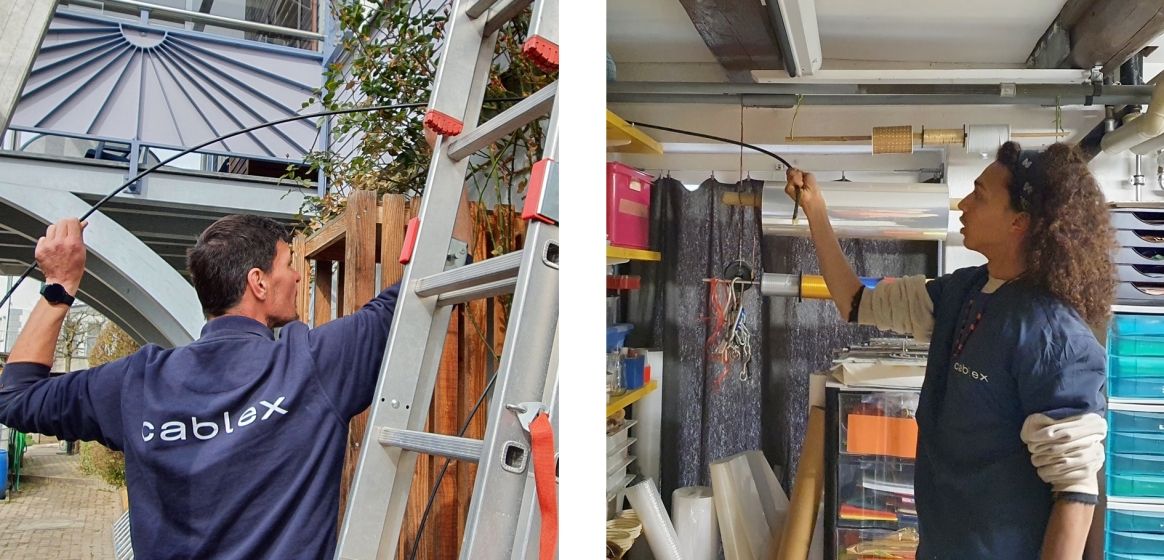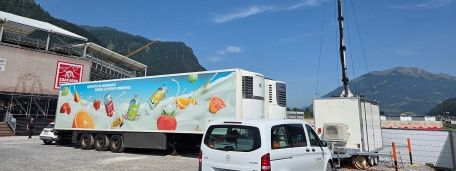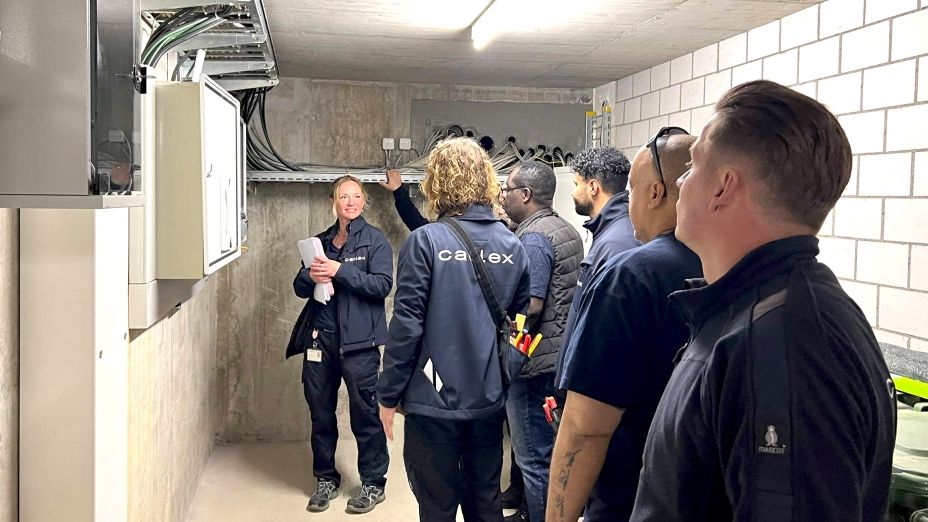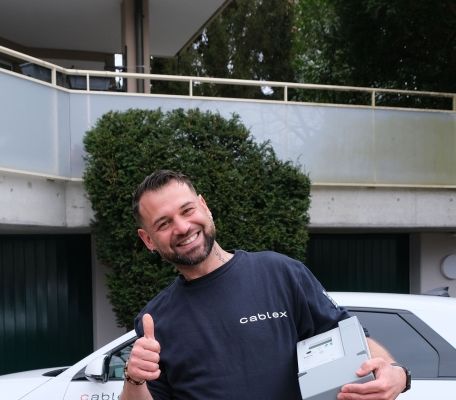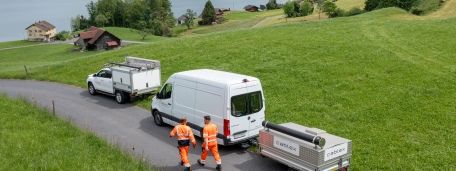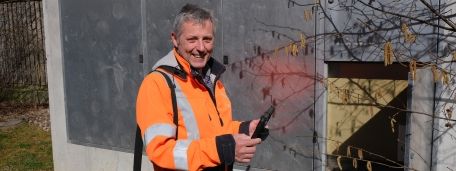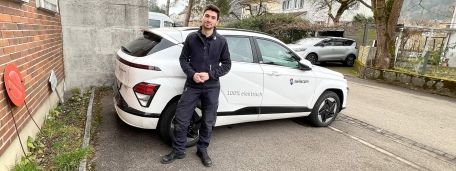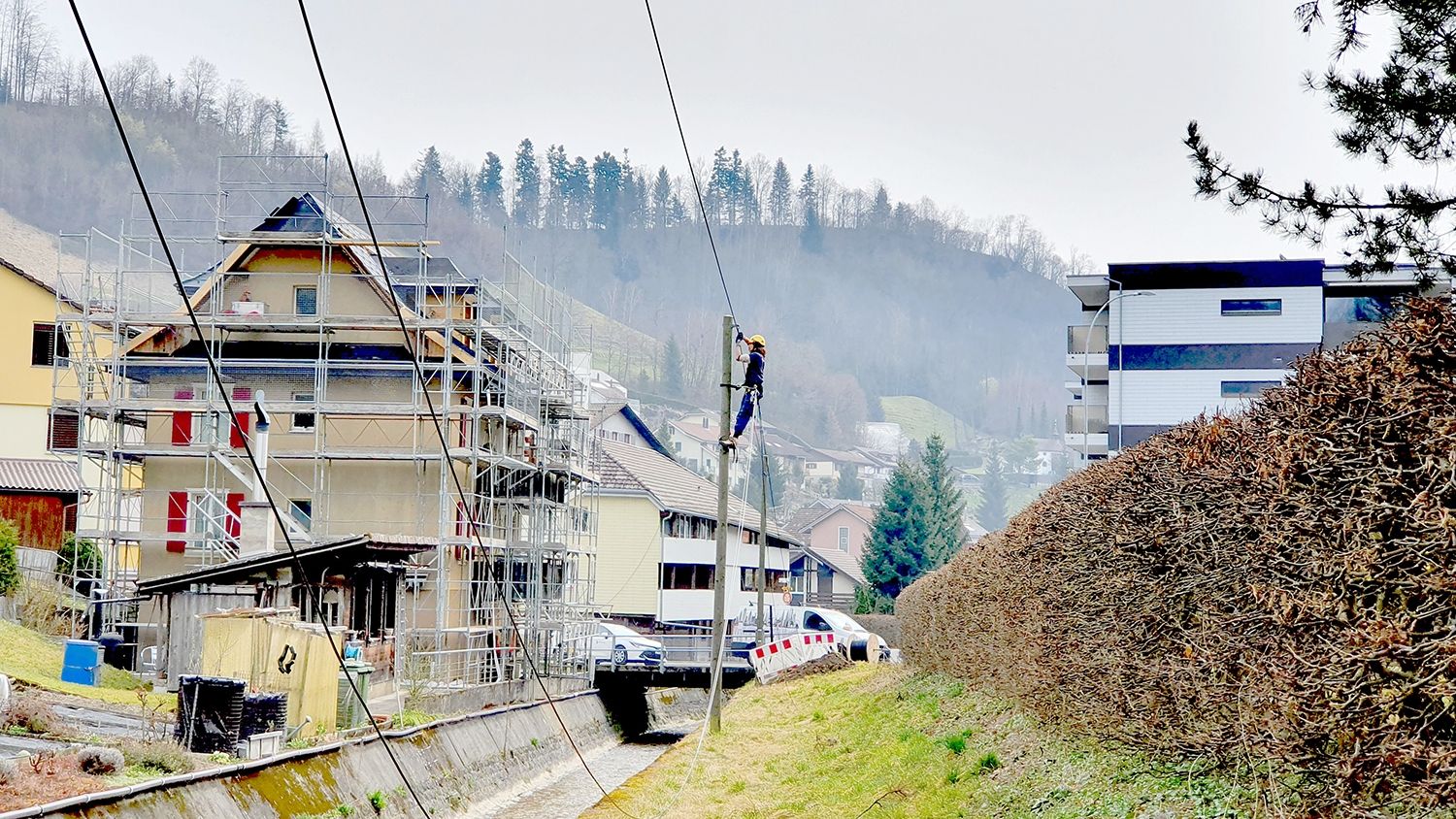
Optical Fibre Point-to-Multipoint via Overhead Line.
Connecting the houses in Wolhusen with optical fibre does not require any work access holes, and only minor construction measures are needed. Dominik Sigrist praises the helpful cooperation of the local customers in this regard: "They are all very grateful when we turn up. It’s all coordinated smoothly.

Many people are familiar with the community of Wolhusen in the Canton of Lucerne, due to the news coverage of the devastating damage left by a hailstorm at the end of June 2021. The repairs to the roofs of the houses are still underway today, and the buildings in the community are now also being connected to the optical fibre network.
Point-to-multipoint technology (XGS-PON) is being used for the network expansion in Wolhusen, so that the required construction measures can be kept as low as possible. When we speak about XGS-PON, we are referring to the "splitter technology". With this we can now supply up to 32 customers using a single fibre, whereas with traditional FTTH, only one customer can be served with a single fibre. And each customer can be offered a bandwidth of 10 gigabits per second at the same time.
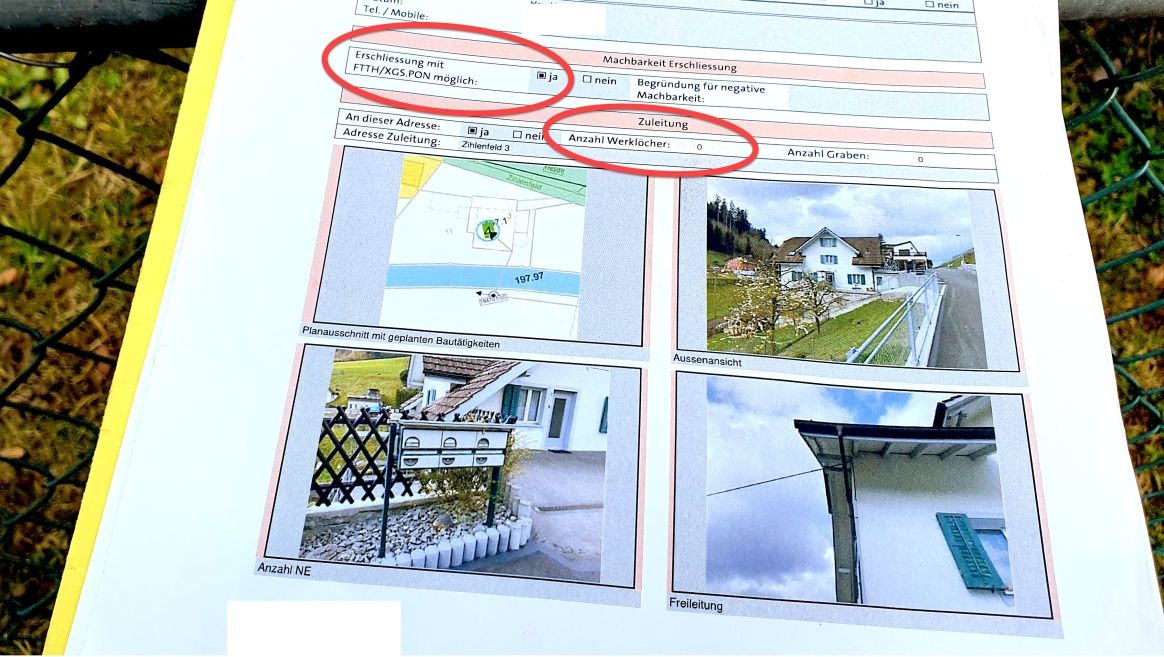
For maximum signal power.
The optical fibre cable is routed to the house via overhead line masts and then laid through to the OTO box of the property to be connected. When pulling cables via overhead lines, the technicians must ensure they comply with a bending radius of 125 millimetres. This Swisscom requirement helps to keep signal attenuation as low as possible to ensure maximum signal performance.
Interesting:
The installed optical fibre line contains Kevlar, a heat-resistant, lightweight synthetic fibre with high tensile strength. For this reason, the carrier cables that are often used can be dispensed with when installing the overhead line. This makes it possible to "brace" the cable directly. A bracing spiral is used for this purpose.
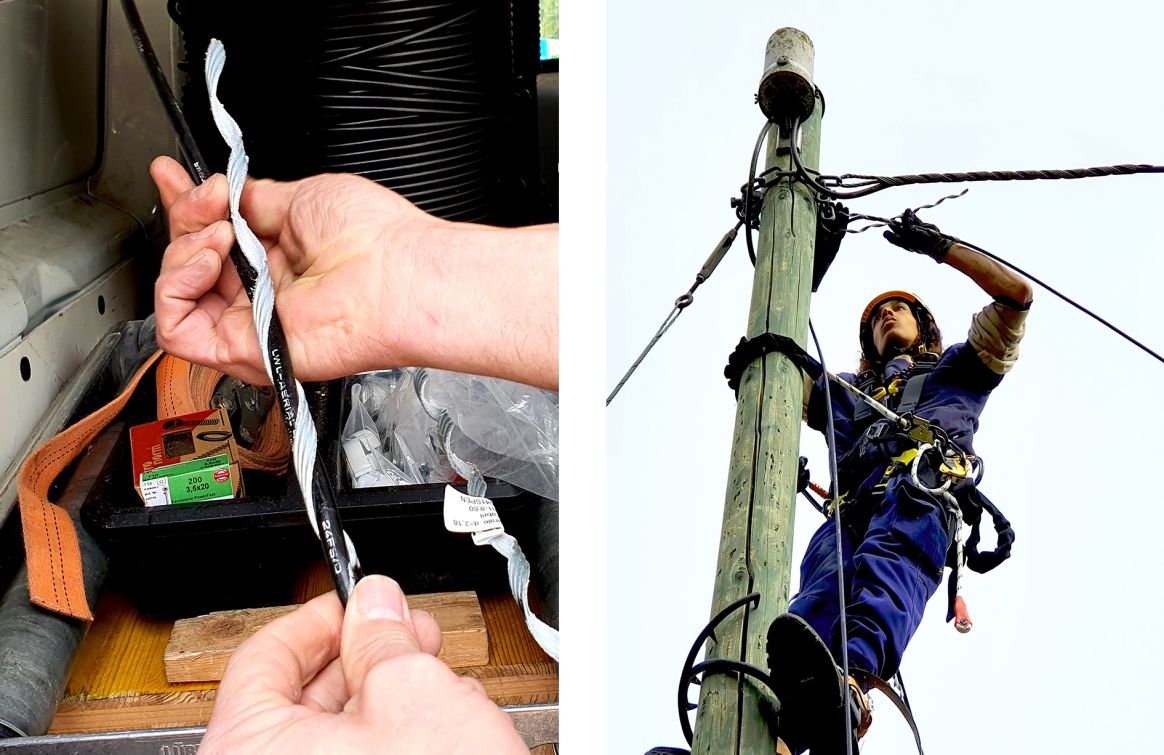
Challenges of in-house infrastructures.
In older buildings, the existing in-house infrastructure often poses a challenge: If the existing installations (in the house) were used when pulling in the fibre optic cable, the cable would be bent too much and the signal would be attenuated.
When connecting the houses in Wolhusen, it was agreed with the owners that the optical fibre cable would be pulled through via the house façade. These structural conditions must be taken into account during the planning phase and discussed with the customers. "Coordination activities with the home-owners regarding the installation measures is problem-free in most cases," says Dominik Sigrist who praises the willingness of the residents to cooperate.
